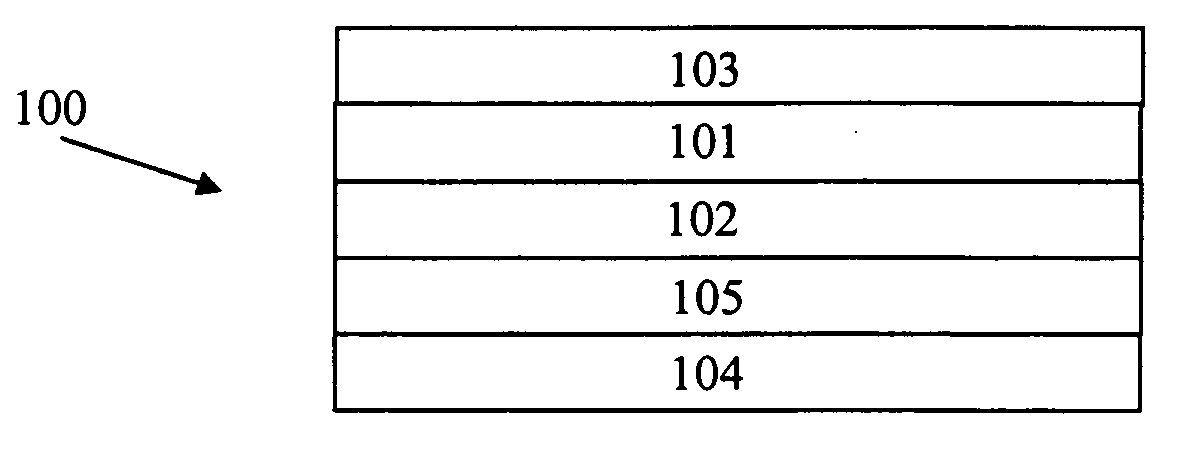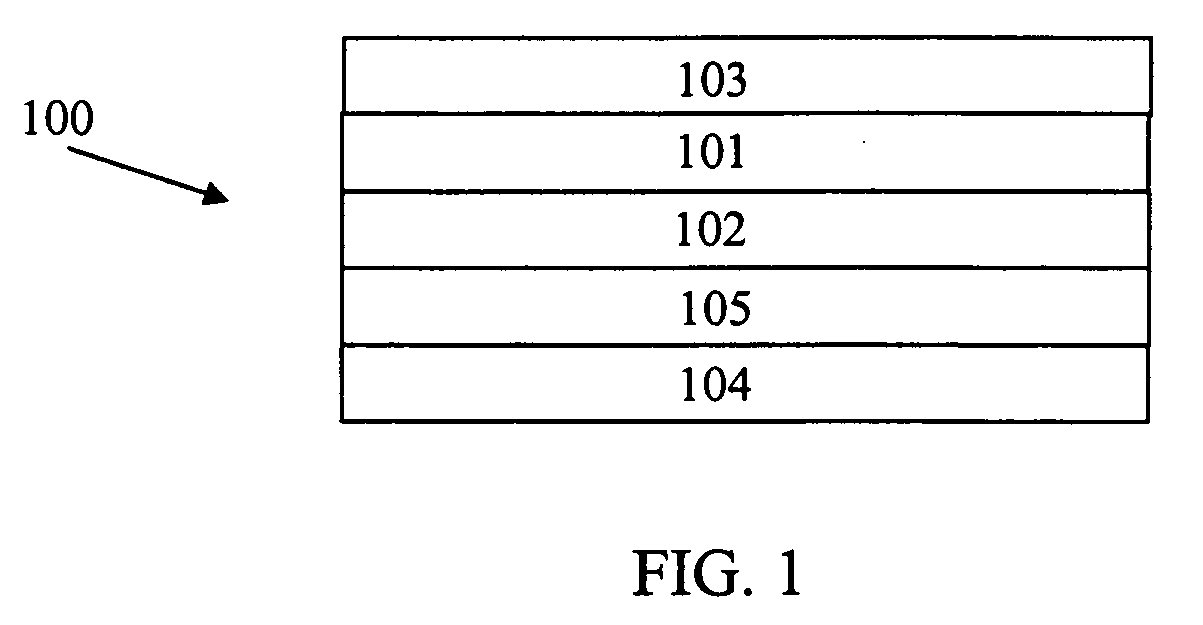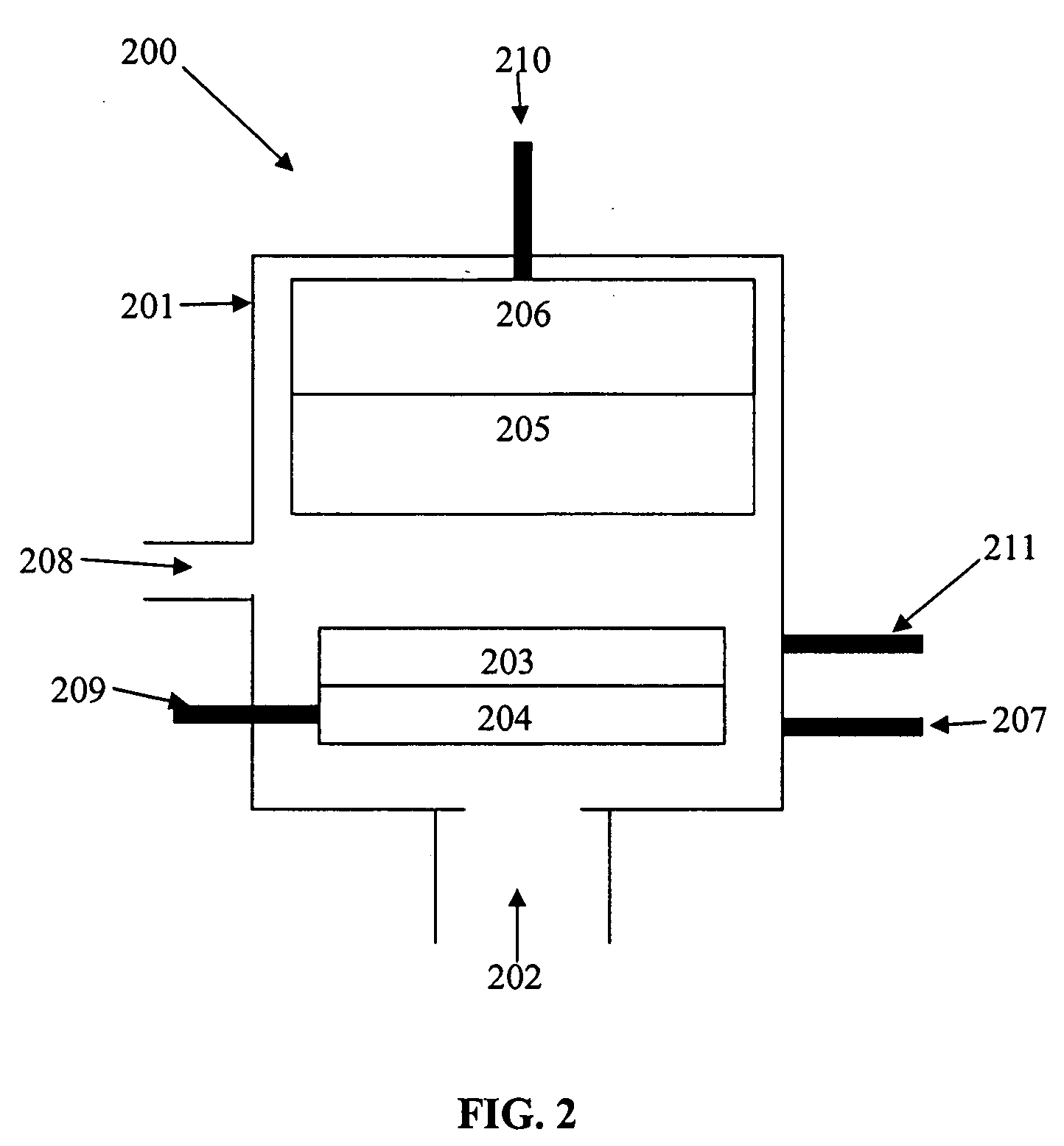Fabrication of magnetic tunnel junctions with epitaxial and textured ferromagnetic layers
a technology of ferromagnetic layers and magnetic tunnel junctions, which is applied in the field of magnetic tunnel junctions, can solve the problems of limited substrates, inability to fully epitaxially grow mtjs on a silicon (si) substrate, and inability to achieve epitaxial growth of fe on a si substrate, so as to speed up the oxidation kinetics
- Summary
- Abstract
- Description
- Claims
- Application Information
AI Technical Summary
Benefits of technology
Problems solved by technology
Method used
Image
Examples
example 1
Growth of a Magnetic Tunnel Junction on Silicon
[0057] This example describes the production of a magnetic tunnel junction composed of a yttrium oxide tunnel barrier layer between two epitaxial cobalt ferromagnetic layers on a silicon substrate. Epitaxial growth of the cobalt on silicon was assisted by a two-strata buffer layer composed of silver and copper. The buffer layer was deposited onto a silicon (111) substrate using DC magnetron sputtering in a high vacuum chamber. The DC magnetron sputtering was a two step process where a three nm thick silver stratus was first sputtered from a silver target onto the silicon substrate and a hundred nm thick copper stratus was subsequently sputtered from a copper target onto the silver stratus. Next, a first cobalt ferromagnetic layer having a thickness of approximately six nm was grown epitaxially on the buffer layer using DC magnetron sputtering from a cobalt target. An epitaxial yttrium tunnel barrier precursor layer having a thickness o...
example 2
Growth of a Magnetic Tunnel Junction on Silicon—Comparative
[0061] This example provides a comparative example of a magnetic tunnel junction made from the same materials as the magnetic tunnel junction of Example 1, wherein oxidation of the tunnel barrier precursor layer was carried out prior to the growth of the second ferromagnetic layer. The process for growing the magnetic tunnel junction was the same as that described above for Example 1, with the exception that the yttrium tunnel barrier precursor layer was exposed to and selectively oxidized by the oxidizing gas mixture of H2 and H2O prior to the growth of the second cobalt layer thereon.
[0062] Again, X-ray photoelectron spectroscopy (XPS) spectra were obtained for the MTJ. The spectra revealed that the yttrium tunnel barrier precursor layer was selectively oxidized, leaving the adjacent cobalt ferromagnetic layer unoxidized. X-ray diffraction (XRD) spectra were also obtained for the MTJ. In contrast to the XRD spectra obtai...
example 3
Growth of a Magnetic Tunnel Junction on Silicon
[0063] This example describes the production of a magnetic tunnel junction composed of an aluminum oxide tunnel barrier layer between two epitaxial cobalt ferromagnetic layers on a silicon substrate. Epitaxial growth of the cobalt on silicon was assisted by a two-strata buffer layer composed of silver and copper. The buffer layer was deposited onto a silicon (111) substrate using the methods described above in Example 1. Next, a first cobalt ferromagnetic layer having a thickness of approximately 6 nm was grown epitaxially on the buffer layer using DC magnetron sputtering from a cobalt target. An epitaxial aluminum tunnel barrier precursor layer was then sputtered onto the first ferromagnetic layer from an aluminum target using DC magnetron sputtering. A second epitaxial cobalt ferromagnetic layer having a thickness of 2 nm was then grown over the tunnel barrier precursor layer.
[0064] After the formation of this multi-layered epitaxia...
PUM
| Property | Measurement | Unit |
|---|---|---|
| thickness | aaaaa | aaaaa |
| partial pressure | aaaaa | aaaaa |
| thickness | aaaaa | aaaaa |
Abstract
Description
Claims
Application Information
 Login to View More
Login to View More - R&D
- Intellectual Property
- Life Sciences
- Materials
- Tech Scout
- Unparalleled Data Quality
- Higher Quality Content
- 60% Fewer Hallucinations
Browse by: Latest US Patents, China's latest patents, Technical Efficacy Thesaurus, Application Domain, Technology Topic, Popular Technical Reports.
© 2025 PatSnap. All rights reserved.Legal|Privacy policy|Modern Slavery Act Transparency Statement|Sitemap|About US| Contact US: help@patsnap.com



